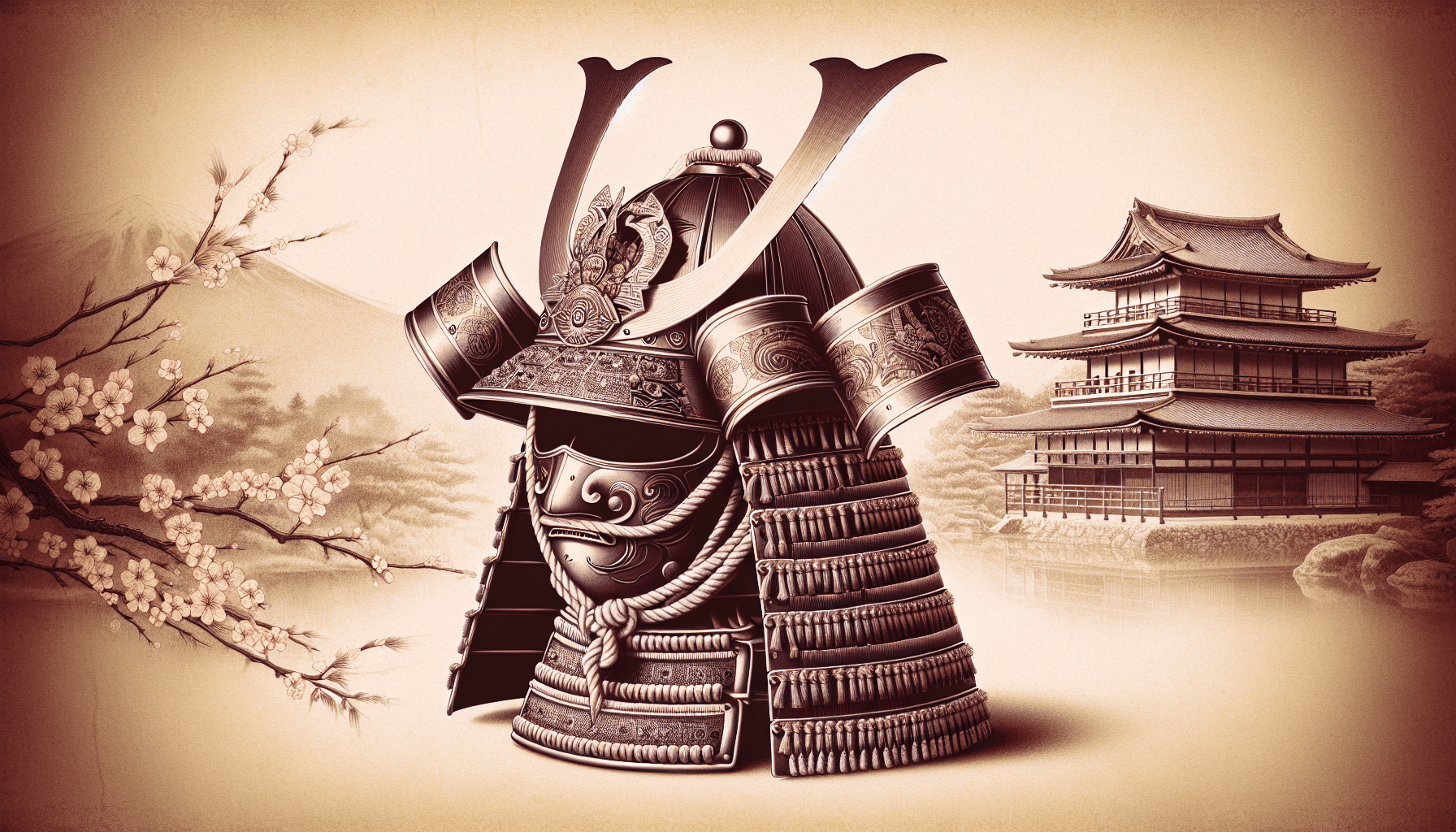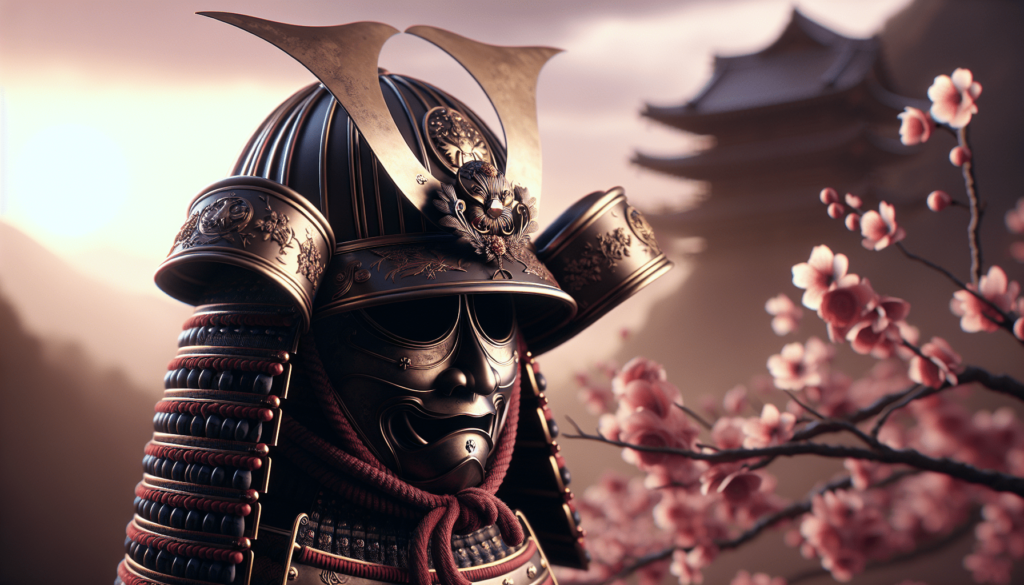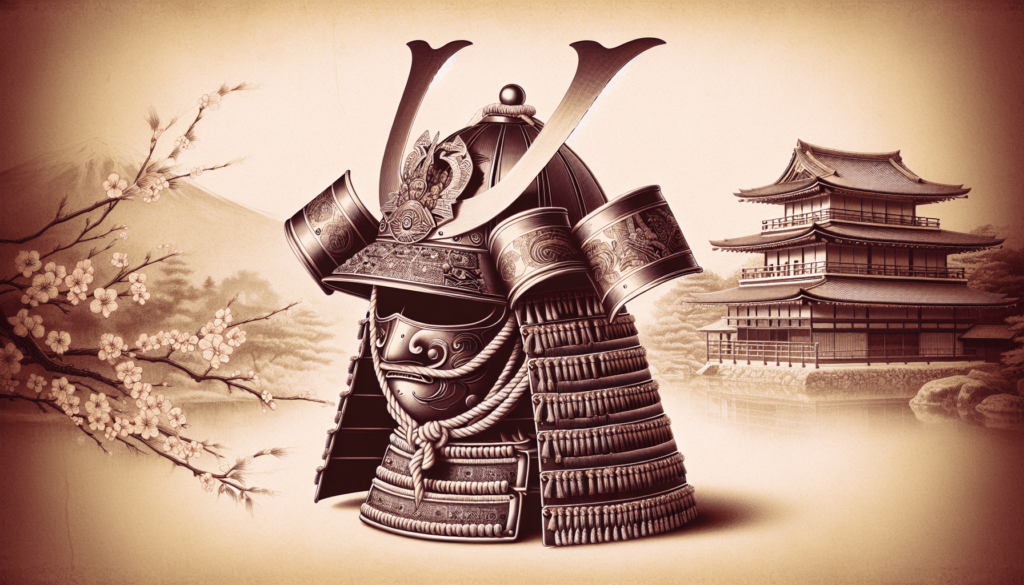
What comes to your mind when you think of samurai helmets? Perhaps the intricate designs, the historical significance, or the powerful figures who wore them? Samurai helmets, known as kabuto, have not only played a crucial role in Japanese history but have also made a striking impact in popular culture, especially in movies and anime. In this article, you will uncover some of the most famous samurai helmets that have graced screens, allowing you to appreciate their beauty and significance even more.
The Significance of Samurai Helmets
Samurai helmets are not just protective gear; they’re a symbol of status, power, and art. Each helmet’s design often reflects the identity of its wearer, showcasing unique artistry and spiritual symbolism. The elaborate decorations and materials used in these helmets can tell an entire story about the samurai’s family, rank, and history. Their representation in movies and anime often accentuates the themes of honor, bravery, and the age-old battle between good and evil.
The Art of Kabuto
The term “kabuto” refers to the traditional Japanese helmet worn by samurai. Crafting a kabuto is an intricate process that involves skilled craftsmanship and a deep understanding of martial arts. Historically, kabuto was made from iron, leather, or other sturdy materials, and adorned with significant motifs. These helmets weren’t just functional; they were often considered works of art.
Cultural Relevance
In Japanese culture, samurai helmets symbolize the bushido code, which emphasizes values like honor, loyalty, and courage. This rich cultural background adds a layer of meaning when you see these helmets depicted in films and anime. It provides insights into the ideals and principles that have shaped Japanese society over the centuries.
Famous Samurai Helmets in Movies
Films have a unique power to bring historical artifacts to life, making them accessible and engaging to modern audiences. Various movies have prominently featured samurai helmets, illustrating their beauty and significance.
1. “Seven Samurai” (1954)
Akira Kurosawa’s masterpiece “Seven Samurai” showcases a variety of samurai armor, including prominently featured kabuto. The characters represent different aspects of the samurai ethos, and the helmets reflect their status and role within the group.
Helmet Style:
The helmets in the film are typically traditional, with a simple yet elegant design that emphasizes the functionality and heritage associated with the samurai.
Cultural Impact:
“Seven Samurai” influenced countless films and genres worldwide, immortalizing the samurai archetype. Its depiction of the kabuto helped solidify the image of samurai warriors in the public eye.
2. “The Last Samurai” (2003)
Tom Cruise’s “The Last Samurai” presents a more Western perspective on the samurai tradition, with stunning visuals that include impressive samurai helmets. The movie depicts the transition of the Japanese samurai class during the Meiji Restoration, blending historical events with personal stories.
Helmet Style:
The kabuto worn in this film often features elaborate crest designs, showcasing the hierarchy of the samurai class.
Cultural Impact:
This modern take helped introduce the samurai to a global audience, highlighting their noble qualities but also showing the tragic aspects of their decline.
3. “Rashomon” (1950)
Another Kurosawa classic, “Rashomon”, features samurai helmets that play a vital role in the storytelling. The film explores different perspectives on the same event, and the visual representation of the armor helps set the historical context.
Helmet Style:
The helmets in “Rashomon” are characterized by unique forma, serving as a reflection of the social status of the warriors involved.
Cultural Impact:
The film’s storytelling technique opened new avenues in cinema, and the representation of samurai culture was instrumental in showcasing Japan’s historical richness.

Famous Samurai Helmets in Anime
Anime has a distinct way of showcasing samurai culture, often blending historical elements with fantastical themes. The utilization of kabuto in anime further exemplifies the aesthetic richness of this art form.
1. “Rurouni Kenshin”
In “Rurouni Kenshin,” samurai helmets play a significant role in illustrating the conflicts between characters. This anime set in the Meiji era explores themes of redemption and the shifting ideals of honor and justice within the samurai class.
Helmet Style:
Characters frequently don kabuto that reflect their unique personalities and moral standings, often crafted in vibrant colors and adorned with specific motifs.
Cultural Impact:
This anime brought attention to the complexities of the samurai era, showing both the romanticized and harsh realities of their lives.
2. “Samurai Champloo”
“Samurai Champloo” combines elements of hip-hop culture with samurai storytelling, creating a unique blend that stands out in the anime landscape. The helmet designs reflect the different personalities and backgrounds of the characters.
Helmet Style:
In this anime, kabuto often feature stylized elements, giving them a modern twist while still retaining traditional characteristics.
Cultural Impact:
This series introduced a younger generation to samurai culture while engaging them with contemporary themes and rhythm, bridging the gap between old and new.
3. “Afro Samurai”
“Afro Samurai” is a unique blend of anime and hip-hop culture, and it uses samurai helmets to convey themes of revenge and honor. The protagonist, Afro, is on a quest to avenge his father, and the helmet plays a symbolic role in his journey.
Helmet Style:
The helmets in “Afro Samurai” are stylized and often exaggerated, emphasizing the characters’ strength and ambitions.
Cultural Impact:
This series redefined how samurai narratives can be portrayed in modern media, appealing to a broad audience and bringing samurai aesthetics into contemporary discussions.
Iconic Features of Samurai Helmets
Samurai helmets feature several characteristics that are integral to their structure and symbolism. Understanding these elements will enhance your appreciation of them in movies and anime.
1. Crests (Maedate)
The crest, or maedate, is a decorative element placed at the front of the kabuto. It usually signifies the clan’s emblem or the samurai’s personal symbol.
| Type | Description |
|---|---|
| Clan Crests | Usually specific to a samurai’s family |
| Personal Crests | Unique representations of the samurai’s identity |
The varied designs can indicate the wearer’s social status, lineage, or personal accomplishments, making the crest a key element when understanding a character’s background.
2. Liner and Padding
Inside the kabuto, there’s often a lining made of various materials meant for comfort and fit. The padding serves practical purposes, such as absorbing shock during battles.
| Material | Purpose |
|---|---|
| Cotton | Comfort and cushioning |
| Leather | Durability and strong structure |
This aspect of the helmet illustrates how form and function coexist in the world of samurai gear, a detail that many films and anime emphasize.
3. Facial Protection (Shikoro)
Many kabuto feature extensions known as shikoro that protect the neck and lower face. This addition not only offers protection but also further showcases artistry through intricate designs.
4. Tachi (Crest Horse)
Some kabuto are adorned with tachi, resembling a horse’s tail. This motif has cultural significance, often symbolizing loyalty and the warrior spirit.
| Symbolism | Meaning |
|---|---|
| Loyalty | Signifies fidelity to one’s lord |
| Warrior Spirit | Represents the essence of the samurai |
Recognizing these symbolic features allows you to appreciate the depth of each helmet’s portrayal in popular media.

The Role of Samurai Helmets in Storytelling
In both movies and anime, the portrayal of samurai helmets extends beyond visual appeal; they serve as critical storytelling devices.
Visual Symbolism
Helmets often represent a character’s growth, struggles, or conflicts. For instance, a samurai who begins their journey wearing a pristine helmet may lose it or alter it as they face challenges, signifying their internal transformation.
Character Development
The designs of kabuto can reflect a character’s journey or moral dilemmas. For example, a character who evolves from a conflicted warrior to a noble leader may have their helmet changed to mirror this transformation.
| Character Trait | Helmet Change |
|---|---|
| Growth | Transition from ornate to simple designs |
| Conflict | Damage to the helmet representing battles lost |
By analyzing these changes throughout a story, you can gain insights into a character’s narrative arc and thematic significance.
Conclusion
Samurai helmets are not only fascinating historical artifacts but also engaging storytelling elements that have captivated audiences in both films and anime. From the iconic kabuto in “Seven Samurai” to the unique designs in “Afro Samurai,” these helmets embody the spirit of the samurai and reflect the cultural values associated with them.
The intricate details, cultural significance, and profound meanings behind each helmet invite you to appreciate the artistry woven into these narratives. If you ever find yourself watching a samurai film or anime again, you might just look closer and see the stories waiting to be unveiled through those remarkable helmets.




[…] comes to your mind when you think about samurai helmets? Do you envision fierce warriors adorned in intricate headgear, ready to defend their honor? In […]